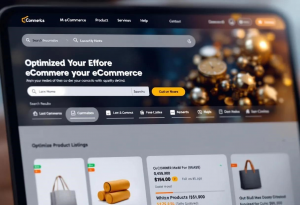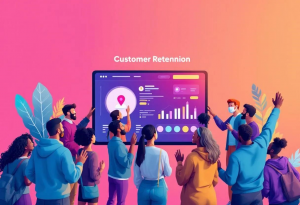So, you’ve got an app idea? Awesome! I love hearing that. But listen, turning that spark into a real, live app business? That’s where things get tricky. I’ve seen so many people with great ideas stumble and fall. It’s usually not the idea itself, but the little things they miss during development and marketing. Let’s break down the biggest mistakes I see and, more importantly, how you can dodge them.
Development Fumbles: Building That Solid Base
This is where the magic should happen. It’s where your vision comes to life. But heads-up: it’s also where things can go sideways fast.
1. Skipping the Homework: Market Research
Seriously, before you type a single line of code, know your market.
- Who are you building this for?
- What problems are you solving?
- Is anyone else solving the same problems?
Ignoring this is like building a house on sand. You need that solid research to prove your idea is worth building and to highlight what makes your app special.
How to avoid it: Do your research! Surveys, interviews, competitor breakdowns… Use everything. Tools like SurveyMonkey and SEMrush are your new best friends. And don’t assume you know what people want. Prove it.
2. UX Nightmares: User Experience Matters
A clunky app is a dead app. Plain and simple. People expect things to be easy and intuitive. If your app makes them think too hard or looks like it was designed in 1995, they’re gone.
As Steve Krug said in “Don’t Make Me Think,” usability is king.
How to avoid it: Shell out for good UX design. Find a designer who knows their stuff. Wireframes, prototypes, user testing… Do it all. And remember the golden rule: keep it simple.
3. One-Platform Tunnel Vision: Cross-Platform Compatibility
Sticking to just iOS or just Android? That’s cutting your potential audience in half! I get it, focusing on one seems cheaper at first. But you’re missing out on a ton of users.
How to avoid it: Look into cross-platform frameworks like React Native or Flutter. Write the code once, and boom, it works on both. Or, plan for both platforms from day one, even if you launch on one first.
4. Security? Nah, We’re Good… NOT!
Data breaches are a death sentence. Protect your users’ info! It’s not just good practice; it’s the law in many places. Messing this up leads to bad press, lost money, and maybe even a lawsuit.
How to avoid it: Make security a priority from the start. Secure coding, encrypting data, regular security checks… Consider hiring an expert to try and break your app (a “penetration test”). And keep up with the latest threats.

Think of your app like a bank vault. You wouldn’t leave the door unlocked, would you?
5. Performance Problems: Nobody Likes a Slow App
Slow loading? Constant crashes? Battery drain? Prepare for one-star reviews and mass uninstalls. People want apps that are fast and reliable.
How to avoid it: Optimize everything. Code, images, data… Use tools to find bottlenecks. Test your app on different devices and networks. And keep updating to fix problems.
Marketing Messes: Getting Eyeballs on Your App
Building a great app is step one. Step two? Making sure people actually know about it. This is where a lot of folks drop the ball.
6. Launch Day? Marketing Day! (Wrong!)
Waiting until launch to start marketing is a major blunder. You need to build hype before your app even hits the stores. A pre-launch strategy helps you find users, get feedback, and build a following.
How to avoid it: Start early. Months before launch. Create a landing page, build an email list, get social. Content, influencers, PR… Use it all. Offer beta access for feedback.
7. ASO? More Like A-SNOOZE… (Big Mistake!)
ASO is App Store Optimization. It’s like SEO, but for app stores. It helps people find your app when they search. Skip it, and your app is invisible.
How to avoid it: Research keywords. What are people searching for? Optimize your title, description, keywords, and screenshots. Get good reviews. And keep updating your app to improve its ranking.
8. Ignoring Your Users: Feedback is Gold
Ignoring user feedback is like driving blind. They’re telling you what they like and don’t like. Listen!
How to avoid it: Ask for feedback. In-app surveys, feedback forms, social media… Monitor reviews and respond to comments. Use that feedback to fix bugs, add features, and plan future updates.
Imagine your users are giving you a roadmap to success. Would you throw it away?
9. Data? What Data?: Tracking and Analysis
Marketing isn’t a one-and-done thing. You need to track what you’re doing, see what works, and adjust. Otherwise, you’re just guessing.
How to avoid it: Use analytics tools. Track downloads, active users, retention, conversions… Analyze your campaigns. What’s working? What’s not? Adjust based on the data. A/B test different messages and creatives.
10. Monetization? Uh… Later?: Have a Plan!
How are you going to make money? Without a plan, your app is just an expensive hobby. In-app purchases? Subscriptions? Ads? Freemium? There are options.
How to avoid it: Pick a model that fits your app and your audience. Think about the pros and cons of each. Test different strategies to see what works best. And be upfront with users about how you make money.
The Bottom Line
Launching an app is tough. But by avoiding these mistakes, you’re already ahead of the game. Research, UX, security, performance, marketing… It all matters. Listen to your users, track your results, and keep learning. The app world is competitive, but with the right approach, you can absolutely build something amazing.
Now go out there and make it happen!





